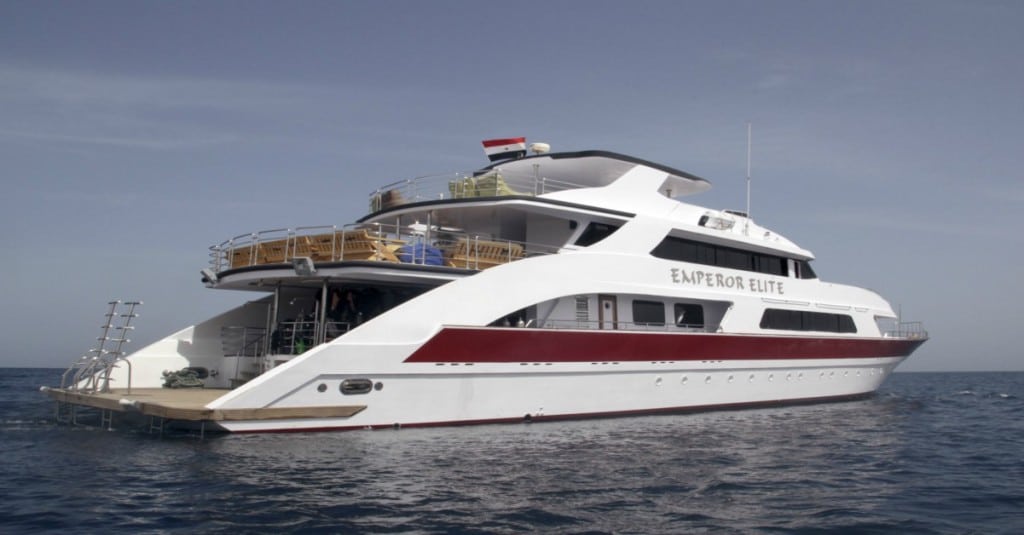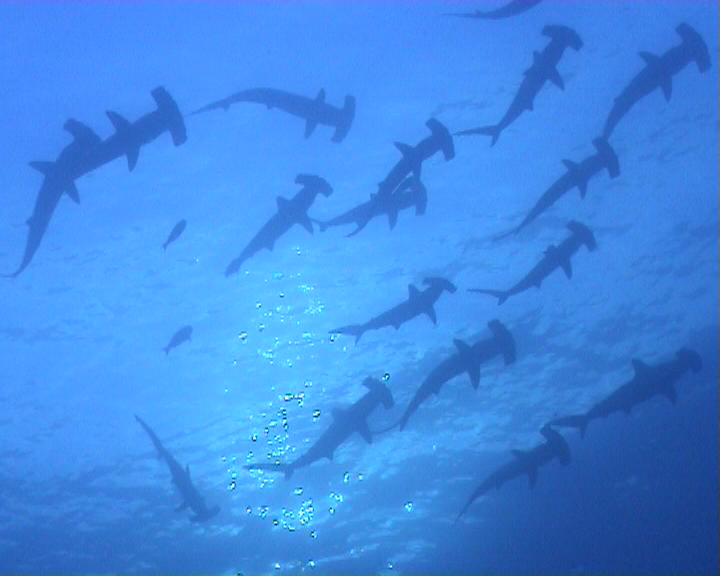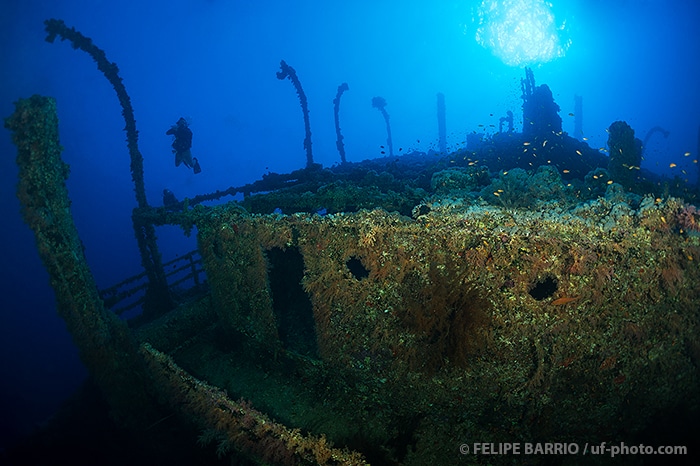News
Diving with… Simone Schaller, Emperor Divers
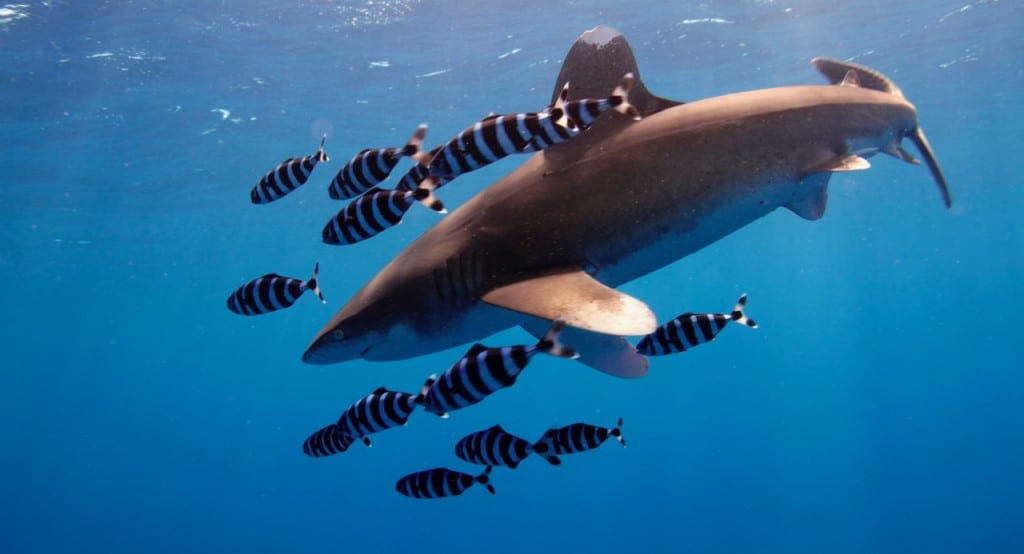
In this ongoing series, we speak to the people who run dive centres, resorts and liveaboards from around the world about their businesses and the diving they have to offer
Simone Schaller
What is the name of your business?
Emperor Divers
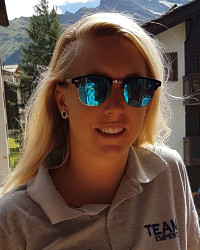 What is your role within the business?
What is your role within the business?
Safari Guide
How long has the business operated for?
25 years
How long have you dived for, and what qualification are you?
7 years; I’m a Master Scuba Diver Trainer
What is your favourite type of diving?
That’s very difficult to answer; definitely warmer than 25 degrees! Mostly blue water diving and walls, like Little Brother in the Red Sea.
If you could tell people one thing about your business (or maybe more!) to make them want to visit you what would it be?
Diving with Emperor is always very special. We offer various trips for all levels of divers including advanced to professional divers. Sharks, cave systems, amazing reefs, walls, wrecks, you name it, we have it. We always have a good mix of nationalities (both guides and guests) on our boats so you’ll have a great time above and underwater. Oh and don’t forget the food – you definitely won’t lose weight during your trip. 🙂
We love diving; it’s really our passion and we love to share our world with you and show you our favourite spots.
Nitrox is free on all our boats in the Maldives and the Red Sea – if you’re not yet certified, don’t worry you can get certified while on safari.
What is your favourite dive in your location and why?
Easy to answer – Little Brother in the Red Sea. I tell people that Little Brother always has a surprise for them. I’ve had my best dives there; encounters with hammerheads coming incredibly close, swimming past slowly and very often coming back, again and again. It’s not uncommon to get five different kinds of sharks on one dive, but one lucky day, a magnificent juvenile whale shark swam past me and my group so we even got to see six different shark species on one dive – what a feeling!
You get threshers, white tip reef sharks, grey reef sharks, scalloped hammerheads and oceanic white tips and sometimes, if you’re lucky, a whale shark or a manta ray swims past. But that’s not everything, the walls at Little Brother are full of beautiful soft coral and some incredibly huge gorgonian fans. Even though it’s small and there can be strong currents, I could dive it every single day.
What types of diving are available in your location?
Red Sea: incredible visibility, wreck dives, reef dives, hammerhead dives, pinnacle dives, advanced diving, beginner diving, plus, the best value you can find anywhere!
Maldives: channel dives, manta cleaning stations, pinnacle dives, reef dives, manta night dives, whale shark snorkelling, whale sharks and mantas at night behind the boat, hammerhead blue dives, amazing night dives with sharks and rays.
Indonesia: muck diving, manta cleaning stations, hammerhead blue dives, best coral reefs in the world (it’s the centre of the Coral Triangle), whale sharks, reef dives; you name it, Indonesia essentially has it all.
What do you find most rewarding about your current role?
I love my role as a dive guide. I get to meet people every week who love the same thing as I do and since they are spending a whole week on board I get to hear some of their stories and diving adventures from all over the world. I just love being in the water and showing people “my” world. I try my best to make everybody‘s trip a once in a lifetime experience.
What is your favourite underwater creature?
Well I love the hammerheads in the Red Sea, their behaviour is fascinating. I truly believe that they are interacting with us divers, coming to check us out, being curious and circling around us. Just last week I saw four hammerheads at around 35 metres depth, this was in the second half of the dive so most of my group was at 20 metres on their way up to start their safety stop. Once I made my way up to them I turned around and two of the four hammerheads were swimming up to us to a depth of less than 20 metres! So everybody got to see them in the end. But I must say my true love are whale sharks, at every encounter I’m stunned by their beauty. Everytime I get to see one I have tears in my eyes – no kidding! So far I’ve only seen juveniles; I can’t wait to go and dive with Emperor Maldives to see some bigger ones.
Are there any exciting changes / developments coming up in the near future?
We have just got a fourth boat operating in the Red Sea from Hurghada and Port Ghalib, Emperor Echo. We keep trying to find ways to be innovative and provide an even better service for our guests. Also exciting is that we’re working on new routes to offer divers more options, especially divers who have been to the Red Sea a lot of times. We are also planning to offer Dolphin and Dugong focused tours.
As a centre what is the biggest problem you face at the moment?
The biggest problem for me is rubbish in the sea; it is incredible that on every dive there is something to be collected. It affects the oceans and the marine life. The other problem is overfishing; there are a lot less fish now than there were years ago, which means fewer big animals, which could mean less divers. We are still lucky to be able to usually have weekly shark, turtle and ray encounters, especially in the south, but we must take better care of our oceans.
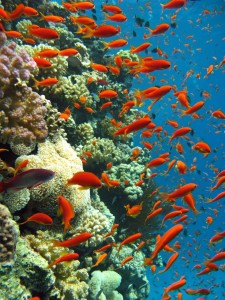 Is your centre involved in any environmental work?
Is your centre involved in any environmental work?
We are trying to reduce plastic waste as much as possible; you won’t find straws or single use plastic cups on our boats. Our guests receive a water bottle at the beginning of the week and are encouraged to refill and reuse it.
We also encourage people to collect debris underwater and we of course collect as much as possible ourselves to set a good example. Emperor Red Sea also works closely with HEPCA and supports them in ways to manage the Red Sea.
How do you see the SCUBA / Freediving / snorkeling industry overall? What changes would you make?
I think the diving and snorkelling industry is a great way for people to discover the oceans first hand and therefore care for it more. It is the easiest way to educate people about marine life and the environment. The most important thing is that professionals or tour operators have to respect nature and follow rules. It is the professional, the diving instructor or the snorkel guide, who is a role model for customers and should inform them about the rules e.g. picking starfish up to take pictures with them is not okay, dolphins don’t like to be touched etc. In fact, no marine life should be touched.
What would you say to Scubaverse readers to promote the diving you have to offer?
We operate in some of the best value-for-money and easy-to-access diving destinations in the world. You will not find better locations for the money than the Red Sea, the Maldives and Indonesia with Emperor Divers.
The Red Sea has some of the best visibility and colourful hard corals in the world, the Maldives has some of the best manta action and fish-filled dive sites in the world and Indonesia has a bit of everything, whilst being the most bio-diverse underwater environment on earth at the centre of the Coral Triangle.
Where can our readers find out more about your business?
Blogs
Northern Red Sea Reefs and Wrecks Trip Report, Part 2: Wall to Wall Wrecks

Jake Davies boards Ghazala Explorer for an unforgettable Red Sea diving experience…
The second day’s diving was a day full of wreck diving at Abu Nuhas, which included the Chrisoula K, Carnatic, and Ghiannis D. The first dive of the day was onto the Chrisoula K, also known as the wreck of tiles. The 98m vessel remains largely intact where she was loaded with tiles which can be seen throughout the hold. The stern sits at 26m and the bow just below the surface. One of the highlights of the wreck is heading inside and seeing the workroom where the machinery used for cutting the tiles are perfectly intact. The bow provided some relaxing scenery as the bright sunlight highlighted the colours of the soft coral reef and the many reef fish.

Following breakfast, we then headed to the next wreck, which was the Carnatic. The Carnatic is an 89.9m sail steamer vessel that was built in Britain back in 1862. She ran aground on the reef back in 1869 and remains at 27m. At the time, she was carrying a range of items, including 40,000 sterling in gold. An impressive wreck where much of the superstructure remains, and the two large masts lay on the seafloor. The wooden ribs of the hull provide structures for lots of soft corals, and into the stern section, the light beams through, bouncing off the large shoals of glass fish that can be found using the structure as shelter from the larger predators that are found outside of the wreck.

The final wreck at Abu Nuhas was the Ghiannis D, originally called ‘Shoyo Maru,’ which was 99.5m long and built in Japan back in 1969 before becoming a Greek-registered cargo ship in 1980. The ship then ran aground on the reef on April 19th, 1983, and now sits at the bottom at a depth of 27m. Heading down the line, the stern of the ship remains in good condition compared to the rest of the hull. The highlight of the wreck, though, is heading into the stern section and down the flights of stairs to enter the engine room, which remains in good condition and is definitely worth exploring. After exploring the interior section of the ship, we then headed over to see the rest of the superstructure, where it’s particularly interesting to see the large table corals that have grown at the bow relatively quickly considering the date the ship sank. After surfacing and enjoying some afternoon snacks, we made sure everything was strapped down and secured as we would be heading north and crossing the Gulf of Suez, where the winds were still creating plenty of chop.

The next morning, it was a short hop to Ras Mohammed Nature Reserve for the next couple of days of diving. The 6am wake-up call came along with the briefing for the first site we would be diving, which was Shark & Yolanda. The low current conditions allowed us to start the dive at Anemone City, where we would drift along the steep, coral-filled wall. These dives involved drifts, as mooring in Ras Mohammed wasn’t allowed to protect the reefs. As a dive site, Shark & Yolanda is well-known and historically had a lot of sharks, but unfortunately not so many in recent years, especially not so early in the season. However, there was always a chance when looking out into the blue.

The gentle drift took us along the steep walls of the site, with plenty of anemone fish to be seen and a huge variety of corals. It wasn’t long into the dive before we were accompanied by a hawksbill turtle, who drifted with us between the two atolls before parting ways. Between the two reefs, the shallow patch with parts of coral heads surrounded by sand provided the chance to see a few blue-spotted stingrays that were mainly resting underneath the corals and are always a pleasure to see. With this being the morning dive, the early sunlight lit up the walls, providing tranquil moments. Looking out into the blue, there was very little to be seen, but a small shoal of batfish shimmering underneath the sunlight was a moment to capture as we watched them swim by as they watched us.

Towards the end of the dive, we stopped at the wreck of the Jolanda where the seafloor was scattered with toilets from the containers it was carrying. This provided a unique site to make a safety stop, which was also accompanied by a large barracuda slowly swimming by, along with a hawksbill turtle calmly swimming over the reef as the sun rays danced in the distance.
For the next dive, we headed north to the Strait of Tiran to explore the reefs situated between Tiran Island and Sharm El Sheik, which were named after the British divers who had found them. We started on Jackson before heading to Gordons Reef, where we also did the night dive. All the atolls at these sites provided stunning, bustling coral reefs close to the surface and steep walls to swim along, which always provided the opportunity to keep an eye out for some of the larger species that can be seen in the blue. Midwater around Jackson Reef was filled with red-toothed triggerfish and shoals of banner fish, which at times were so dense that you couldn’t see into the blue. Moments went by peacefully as we enjoyed the slow drift above the reef, watching these shoals swim around under the mid-afternoon sun.

The night dive at Gordon’s Reef was mainly among the stacks of corals surrounded by sand, which was great to explore under the darkness. After some time circling the corals, we came across what we were really hoping to find, and that was an octopus hunting on the reef. We spent the majority of the dive just watching it crawl among the reef, blending into its changing surroundings through changes in colour and skin texture. It’s always so fascinating and captivating to watch these incredibly intelligent animals, in awe of their ability to carry out these physical changes to perfectly blend into the reef. Before we knew it, it was time to head back to the boat to enjoy a well-deserved tasty dinner prepared by the talented chefs onboard.
Check in for the 3rd and final part of this series from Jake tomorrow!
To find out more about the Northern Red Sea reef and wrecks itineraries aboard Ghazala Explorer, or to book, contact Scuba Travel now:
Email: dive@scubatravel.com
Tel: +44 (0)1483 411590
Photos: Jake Davies / Avalon.Red
Marine Life & Conservation
Double Bubble for Basking Sharks

 The Shark Trust is excited to announce that, for two more days only, all donations, large or small, will be doubled in the Big Give Green Match Fund!
The Shark Trust is excited to announce that, for two more days only, all donations, large or small, will be doubled in the Big Give Green Match Fund!
Donate to Basking in Nature: Sighting Giants
The Shark Trust is hoping to raise £10k which will be doubled to £20k. This will go towards Basking in Nature: Sighting Giants. And they need YOUR help to reach they’re goal.
The Shark Trust’s citizen science project is to monitor and assess basking sharks through sightings; encouraging data collection, community engagement, and promoting nature accessibility. This initiative aims to enhance health and wellbeing by fostering a deeper connection with British Sharks.
Campaign Aims
- Increase citizen science reporting of Basking Sharks and other shark sightings to help inform shark and ray conservation.
- Provide educational talks about the diverse range of sharks and rays in British waters and accessible identification guides!
- Create engaging and fun information panels on how to ID the amazing sharks and rays we have on our doorstep! These can be used on coastal paths around the Southwest. With activities and information on how you can make a difference for sharks and rays!
- Promote mental wellbeing through increasing time in nature and discovering the wonders beneath the waves!
Donate, and double your impact. Click Here
-

 News3 months ago
News3 months agoHone your underwater photography skills with Alphamarine Photography at Red Sea Diving Safari in March
-

 News3 months ago
News3 months agoCapturing Critters in Lembeh Underwater Photography Workshop 2024: Event Roundup
-

 Marine Life & Conservation Blogs2 months ago
Marine Life & Conservation Blogs2 months agoCreature Feature: Swell Sharks
-

 Blogs2 months ago
Blogs2 months agoMurex Resorts: Passport to Paradise!
-

 Blogs2 months ago
Blogs2 months agoDiver Discovering Whale Skeletons Beneath Ice Judged World’s Best Underwater Photograph
-

 Gear Reviews2 months ago
Gear Reviews2 months agoGear Review: Oceanic+ Dive Housing for iPhone
-

 Marine Life & Conservation2 months ago
Marine Life & Conservation2 months agoSave the Manatee Club launches brand new webcams at Silver Springs State Park, Florida
-

 News3 months ago
News3 months agoWorld’s Best Underwater Photographers Unveil Breathtaking Images at World Shootout 2023



